- Getting around Lijiang. Dont stay in the Old Towns more than 2 days, there is nothing to do. KRISS Oct 9, 2013 05:46
- 2013 Beijing Temple Fair BENNYLAU Feb 26, 2013 03:29
- Malaysian traveling from KUL - LAX vis Shanghai PVG ZATI_DY Jan 3, 2013 20:15
Taishan: From Top To Bottom
- Views: 12996
- |Vote: 0 0
- |Add to Favorites
- |Recommend to Friends
Evening At The Summit
I had stood on many summits before coming to China, and they were all, without exception, empty. There were trees, or rocks, or snow, or other people, or cairns and even the odd hungry goat, but nothing else.
Summits in China are not the same.
I’m used to this now and so it is no surprise to reach the summit of Taishan and find it laid out like a small town. With paved streets, shops, temples, restaurants and hotels. A part of me is always disarmed by this branch of civilisation that exists at the top of most mountains in China, but I can’t deny that it makes exploring a lot more interesting and provides welcome shelter and sustenance for the weary climber.
This winter’s evening, the summit is deserted. I walk over to the edge and can see nothing but a wall of cloud and fog as though someone is holding a sheet of grey paper before my eyes. I am disheartened at this “viewlessness”: one of the great pleasures of reaching the top of any mountain is being able to look down and survey the world at your feet. There is no chance of this for me.
The night is swooping down quickly to squeeze me against the summit and the cold is biting; I can see my breath and my camera’s zoom lens doesn’t want to work. Great swathes of white cloud keep dancing across the paths, hiding the summit from view and wrapping me up in misty arms, before releasing me again. A welcome hotel light shines out from the gloom and one of the staff calls to me: I accept their offer of a room for the night and step inside.
The Hotel: 南天门宾馆
The patron tells me that at this time of year there are few hotels open on the summit – there are few visitors. I can understand his Chinese and I accept a room for the night. He takes me to the room, it is a twin room, it is very big and freezing cold. I ask him if I can have a smaller room, but he tells me the smaller rooms have no heating. OK. I ask him about the heating and he tells me that it will be switched on automatically at 8pm and not before. I settle for the big room at 80RMB and some hot water, but the flask in my room is empty.
Outside the temperatures plummet to a low of -15°C. This doesn’t worry me, I have lived in the North East of China where it gets much colder than this – the difference, I will soon discover, is that they have heating!
I decide to eat dinner in the hotel’s restaurant. It is expensive, but then it is one of the only places serving food and it is at the top of a mountain. Food must be transported up, I concede, but still the price seems extravagantly high. I don’t think they are ripping me off, I can read the menu. Even the simplest of dishes: potato strips with green peppers, is 30RMB. I order the cheapest meat dish, a vegetable dish and a beer (SUPER expensive) and the bill is almost 100RMB. However, I am warm.... well, still wearing my winter coat and I have hot food, so I can’t really complain.
When it gets to 8.15pm and the heating is still not working, I phone the reception. They tell me if I want the heating on I must pay them an extra 40RMB – I am a little annoyed, asking them why they didn’t tell me this at the beginning (they don’t reply) and I decline on principal.
The room is freezing, the bed is freezing, the sheets are freezing, the floor is freezing, even in all my clothes and coat – I am freezing. I call them again, not 15 minutes later, and agree to pay them in exchange for some heat.
Even with the heating, which comes swiftly enough after I have agreed to pay for it, I remain cold for the entire night, sleeping and waking by turns into a room where I can still see my breath.
When I leave at 6.45am I pay my bill at the reception. It is a young guy who looks at my bill and asks me to pay 80RMB, this is the price of the room. I think about it for a moment – he hasn’t asked me for the extra money for the heating – I decide not to tell him.
The Sunrise
The morning is not looking promising. It is still dark and it has snowed overnight, the snow has been blown into drifts and hugs the steps and doorways with white hands. It is the fluffy stuff with the consistency of polystyrene – no hope of making snowballs.
Alone, I make my way to the “Sunrise Watching Peak” (日观峰). The cloud maintains its grip on the sky and it begins to snow with half-hearted flakes. It is so cold, even with my two pairs of socks and my thermals I can feel an iciness creeping into my feet. I stand watching for the sun amidst the silence of this wall of cloud.
A famous guide book says that 60,000 people were on the summit to watch the Labour Day sunrise in 2001.
I am alone, on January 26th 2007, when, like a pale coin released from the palm of the sky, the sun gleams for a few seconds.
Morning At The Summit
From this point onwards, the morning doesn’t stop. The sun appears increasingly and the cloud thins. Snow covers everything in a fine mesh. The trees are frosted and the cracks in every rock are filled with white lines of ice. The colour of the sky starts to shift, from grey to pale pink and finally – like a breath of fresh air – the blue arrives.
The impossibly bright patches of sky are dazzling against the lifting mists and the mountain is becoming visible. Pine trees step one by one into view, the pale blues and greens of the rocks and pine needles come out from hiding and the curves and valleys of Taishan reveal themselves.
The transformation is incredible.
A Circuit Of The Summit
I might be on a different mountain. The summit is huge, with room for a TV & weather station that sits in ugly prominence and a number of temples and towers scattered on the peaks above the “village”. The village is what I consider the circuit of streets, steps, shops and restaurants that huddle on the flatter part of the summit.
I stop at the bell tower and the monks, happy to see a foreigner, invite me to ring the bell for free. I accept and the sound looms over the mountain, 3 times. There are other temples: a simple one for Confucius and the more elaborate Azure Clouds Temple. Perched at the highest point of the summit is the impressive Jade Emperor Temple (玉皇顶) and at its front stands the famous “Wordless Monument”, a stele bearing no inscription that instead invites every climber’s imagination to describe the view.
I stumble by chance across the Immortal Bridge (仙人桥). Here, 3 large boulders have collapsed onto each other over a large ravine; they hang in the air creating a “bridge”, hence the name.
Exploring the summit is like being in a new world, it is fresh and clean and quiet and the cold is never-ending. After 2 hours, this early morning winter wonderland, beautiful as it is, leaves me aching and I drop into a small cafe to slurp a big bowl of steaming hot noodles and try to shake off the chill.
Going Down
It is time for me to leave, having explored the summit, and I decide on taking the West Route down to give me an alternative view of the mountain. I still must first negotiate the Path of Eighteen Bends, but the snow has been cleared from the steps by the fastidious sweepers and I make a swift and easy descent.
The blue sky has lifted my spirits enormously and Taishan has become the swan (not the ugly duckling of yesterday), all snow-dusted and glistening. With every step down I feel warmer, my feet and fingers thawing and I meet a few climbers now, the first of the days new arrivals. They look weary but I feel as light as a fairy, springing down the steps and admiring the mountain as I go.
Hawkers are abroad this morning selling small packets of Buddhas whose faces are fixed in a variety of grimaces. The price starts at 8RMB and I am not interested, but the hawkers get slim pickings these wintry days and when he drops the price to 2RMB I am as happy to buy them from him as he is to sell them.
The Western Route Down
The Western Route down begins at the Middle Gate (中天门) and descends in a mixture of pathways and road. Most visitors to Taishan will take the bus, but in winter there are only one or two buses a day and I decide to walk. Even with my map, I have big trouble locating the footpath and descend for the most part along the winding road. This turns out to be 15km long.
I have the road to myself for the majority of the journey and I do indeed see a different face to Taishan. This side of the mountain is steep and rocky and covered in deciduous trees that form a tangled blanket of leafless branches – it must be lushly green in the summer!
There are cows wandering the road and great rocky precipices that are obviously waterfalls in the summer, and must be very impressive. Now they are smooth slides and terraces of pale stone amidst the pines.
I pass Zhulin Temple (竹林寺), surrounded by bamboos, but it is closed.
Further down, I stop at a tiny hut that is perched on the side of the road. A cat, two dogs and a chicken are idling outside and an old woman smiles curiously at me. I buy a bottle of water and a packet of biscuits from her and sit down on a stool. The cat, who must be starving, comes and mews incessantly at my feet. I throw her a biscuit and she gobbles it up, I throw her another one– it is the only way to shut her up. I have a new best friend.
Back At The Bottom
It is perhaps 5 hours later and the town of Tai’an appears over the brick dam of a frozen reservoir and I know that I will soon leave Taishan. As usual, the city with its high rises and cranes, feels like an intrusion into the stillness of the mountain. There is a small village here and the road is busy with contrasts: 4-wheel drives swish by along with other locals carrying big plastic bottles full of water.
Looking back at Taishan for the last time I see this mountain as a great bulk of rock dressed in green rags. The sky is pale blue with whispers of white cloud. I imagine for a moment the story of creation where my trip to Taishan really started; and from the chaos of that cloudy box emerges a newborn mountain against a pristine sky.
I am a small traveller in this world, with neither fame, nor fortune, nor political destiny. I will leave no inscriptions to inspire generations, but I have told my tale here, these are my words for the “Wordless Monument” and so I leave my words, my name, my footprints, with all the others who have gone before.
Information (January 2007)
Taishan (泰山) is located in Shandong (山东) Province in the East of China. Tai’an (泰安) is the town at the foot of the mountain and the best place to base yourself to explore. The temperatures at the top of the mountain are VERY cold (-15°C even though at the bottom of the mountain it may be quite warm. Warm clothing, thermals, gloves, hats and scarves are essentials during the winter.
Getting There
From: Jinan (济南)
To: Tai’an Old Station(泰安老站)
By: Bus
Cost: 20RMB
Time: 1 hour
The taxi ride from Tai’an Old Station (泰安老站) to the foot of Taishan (泰山) takes about 10 minutes and should cost about 10RMB.
Taishan (泰山)
Entrance Fee: 80RMB per person (normal price ticket)
Students: 40RMB (half price)
Accommodation on Taishan
I DO NOT recommend this hotel, but it may be your only choice!
South Gate Under Heaven Hotel (南天门宾馆)
Twin room 80RMB per night, BE CAREFUL heating extra 40RMB per night.
Food and beer is expensive.
These are WINTER season prices.



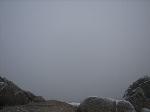
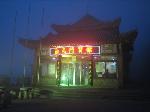
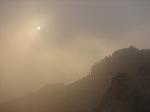


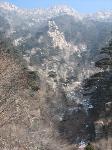
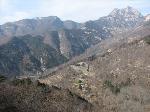
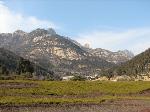
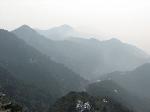
 Copyright © 1998-2025 All rights reserved.
Copyright © 1998-2025 All rights reserved.
1.
Apr 19, 2007 22:02 Reply
CHYNAGYRL said:
Thanks for writing this article. It's very nice... I especially liked your last sentences :-) My family's from Shandong so I wondered what Taishan is really like... it sounds really cold in winter, maybe I'll try and visit in the summertime.